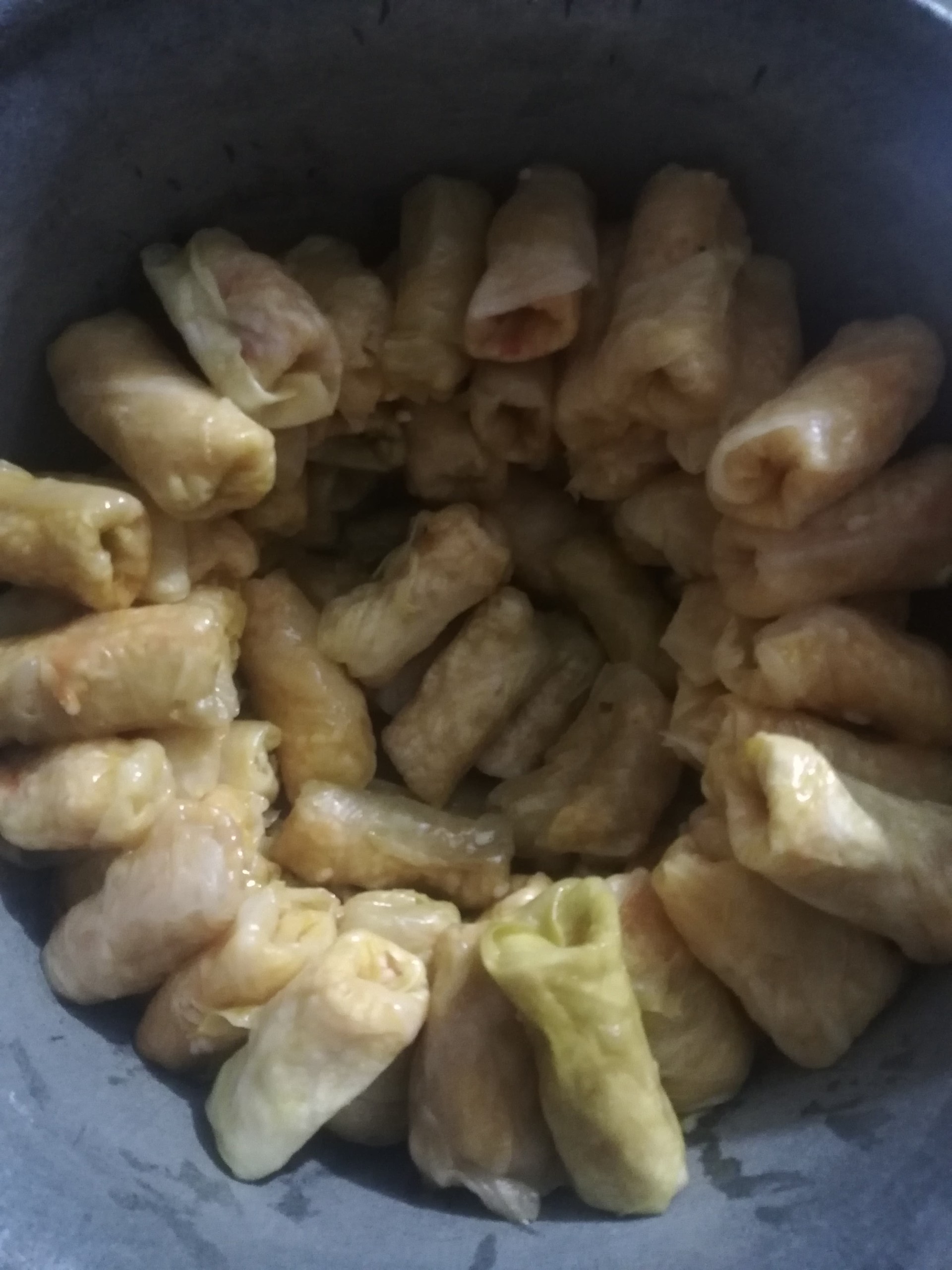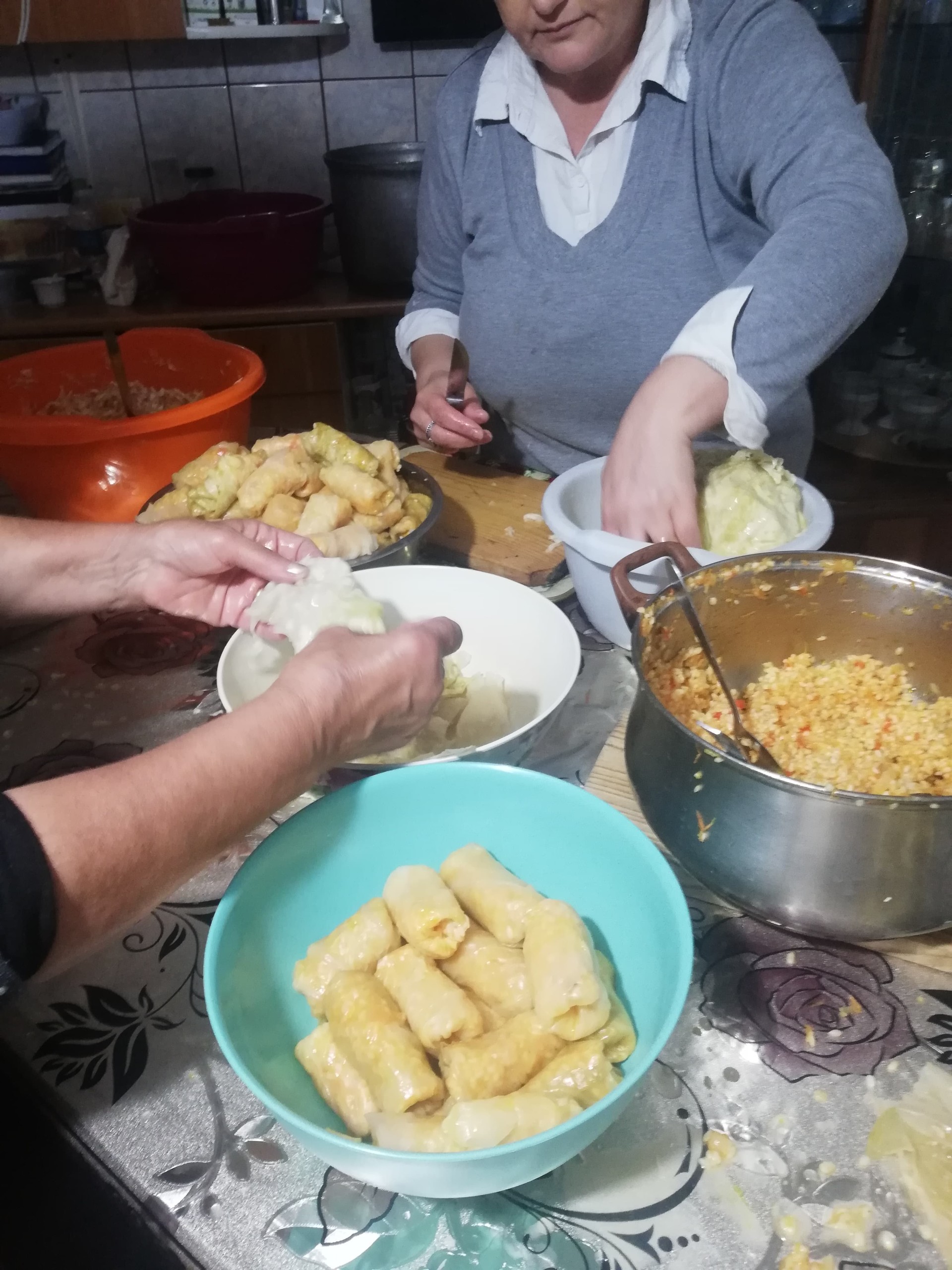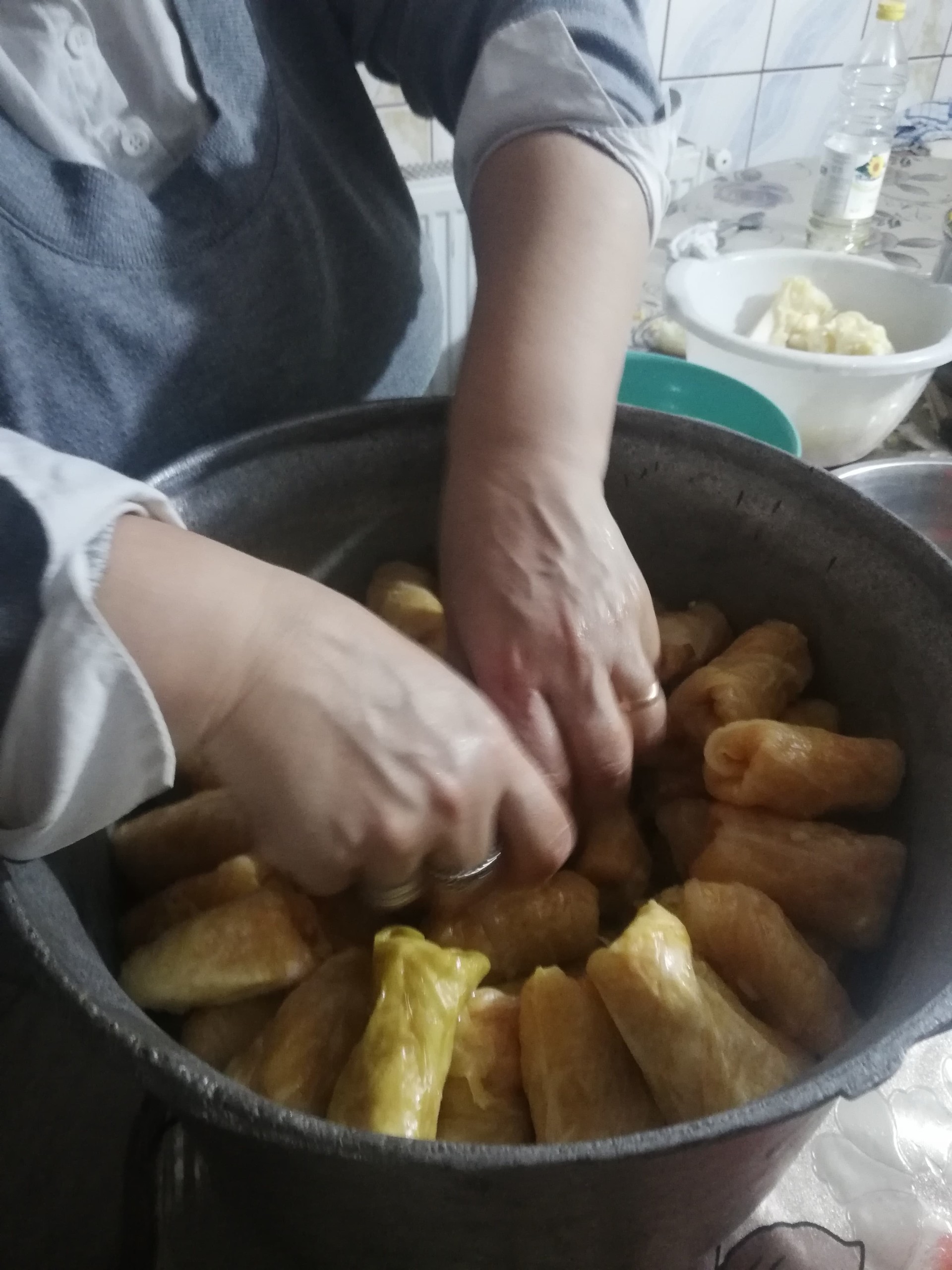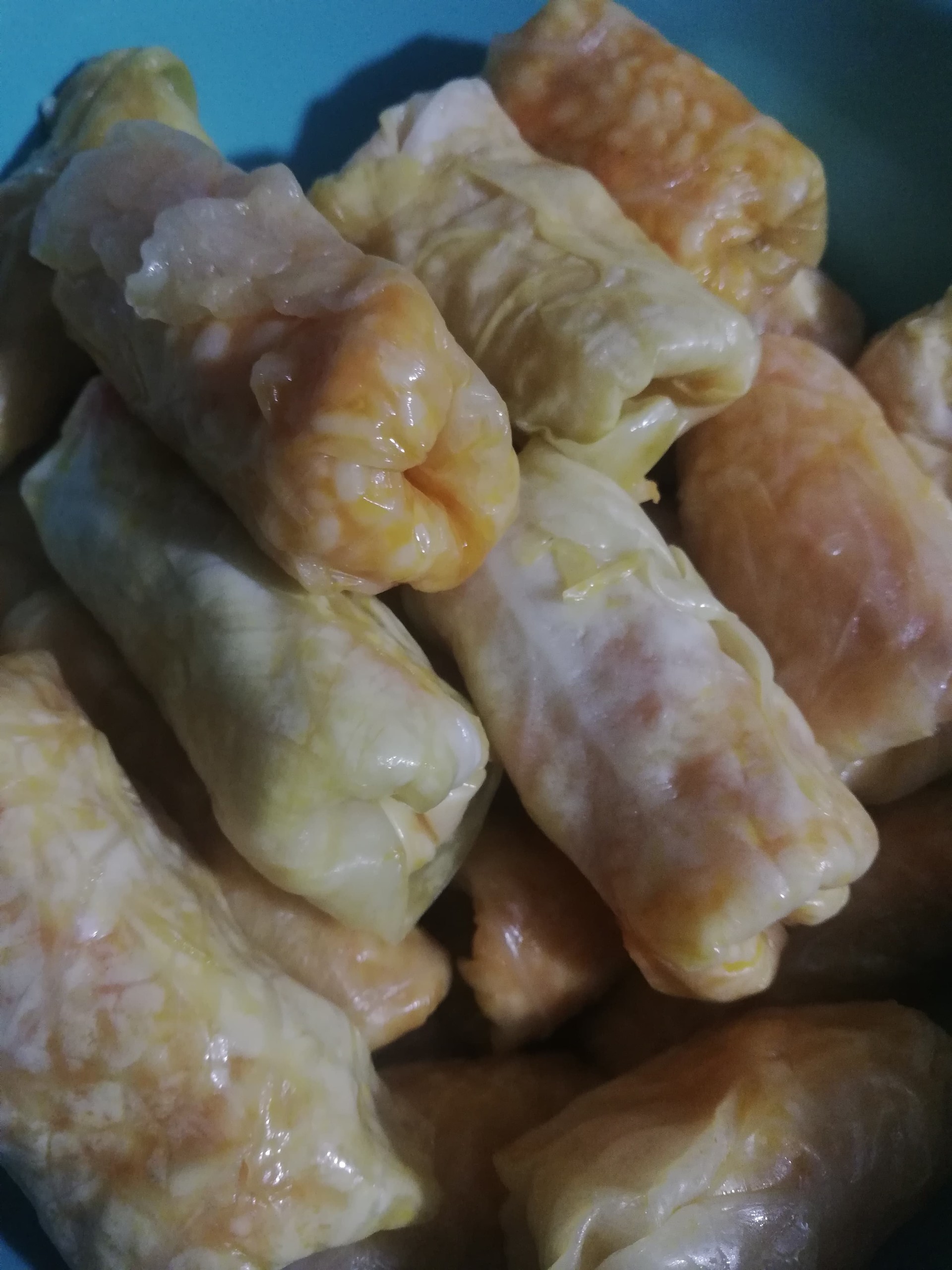Cooking traditionally
Traditional or not?
Probably the most known and much appreciated dish in Romania is “sarmale”. Thus I am not sure that my home country is this dish’s place of origin, I found out from speaking with people coming from different balkan countries that same similar food is also cooked in regions like Turkey, Bulgaria, Serbia and The Eastern Asia. Nevertheless, Romanians consider “sarmale” as a traditional food and to prove their love and appreciation for it, they are serving the dish pretty often around main holidays such as Christmas and Easter, at celebrations – weddings, commemorations of the dead, birthday gatherings – , at traditional food festivals, or whenever the family is missing the taste of the cabagge rolls.

Since I was a child, what fascinated me the most about “sarmale” ( since I actually didn’t liked to eat the dish in my entire childhood ) was the process of preparing the dish. Usually, at important celebrations, when a large amount of food needs to be made, the cooking of “sarmale” seemes to me like an interesting and mysterious ritual which deserves a storytelling.
A women’s business
All of the women in the house are gathering around to fold the cabagge rolls. I have never seen a man to fold a “sarma”. If the youngest ones don’t know how to make it, they are teached by the oldest ones. On the table, the pickled cabbage leaves are perfectly prepared to hold the filling which can consists in a mixture of minced pork and beef meat combined with rice and condiments or in a plant based mixture ( in fasting periods ) made out of rice, onions, carrots, peppers, mushrooms and raisins.

When all the women are coming together over the table, they are starting to fold the filling in a cabagge leaf forming a roll shape. During this time, they are talking and talking about everything is on their mind or heart and they are also gossiping, but from my experience, it is never quiet around the table where the “sarmale” are rolled. After the last “sarma” is fold, all of them are precisely arranged in a very large pot.

Here it seems like another ritual it is done. The cabagge rolls are not just threw randomly in the pot, but meticulously placed in overlaping circles following the round shape of the vessel. This job must be done by one person who has an important task of counting the “sarmale”. Somehow the number is significant, being communicated to all of the family members around. It doesn’t matter the event, the cabagge rolls are always counted.

In continuation, the large pot is given over a low fire or heat because the most appetizing dish is cooked extremly slowly with a lot of patience coming from the people who are just waiting to eat it.
Now, after you have read all of the above, are maybe convinced of the ritual aspect involed in the making of “sarmale” I was talking about earlier. After many long hours of boiling, the dish is preferably served with “mămăliga” ( a cornmeal which is also considered a traditional food in Romania ), sour cream and a spicy pepper.
I recommend the people who are travelling through Romania to give the dish a try and if they have the opportunity to engage with locals for sure they should take part in a cooking experience like such because it is totally beautiful and worth it.
Photo gallery
Share your Erasmus Experience in Bucharest!
If you know Bucharest as native, traveler or as exchange student... share your opinion on Bucharest! Rate different characteristics and share your experience.
Add experience →



















Comments (0 comments)